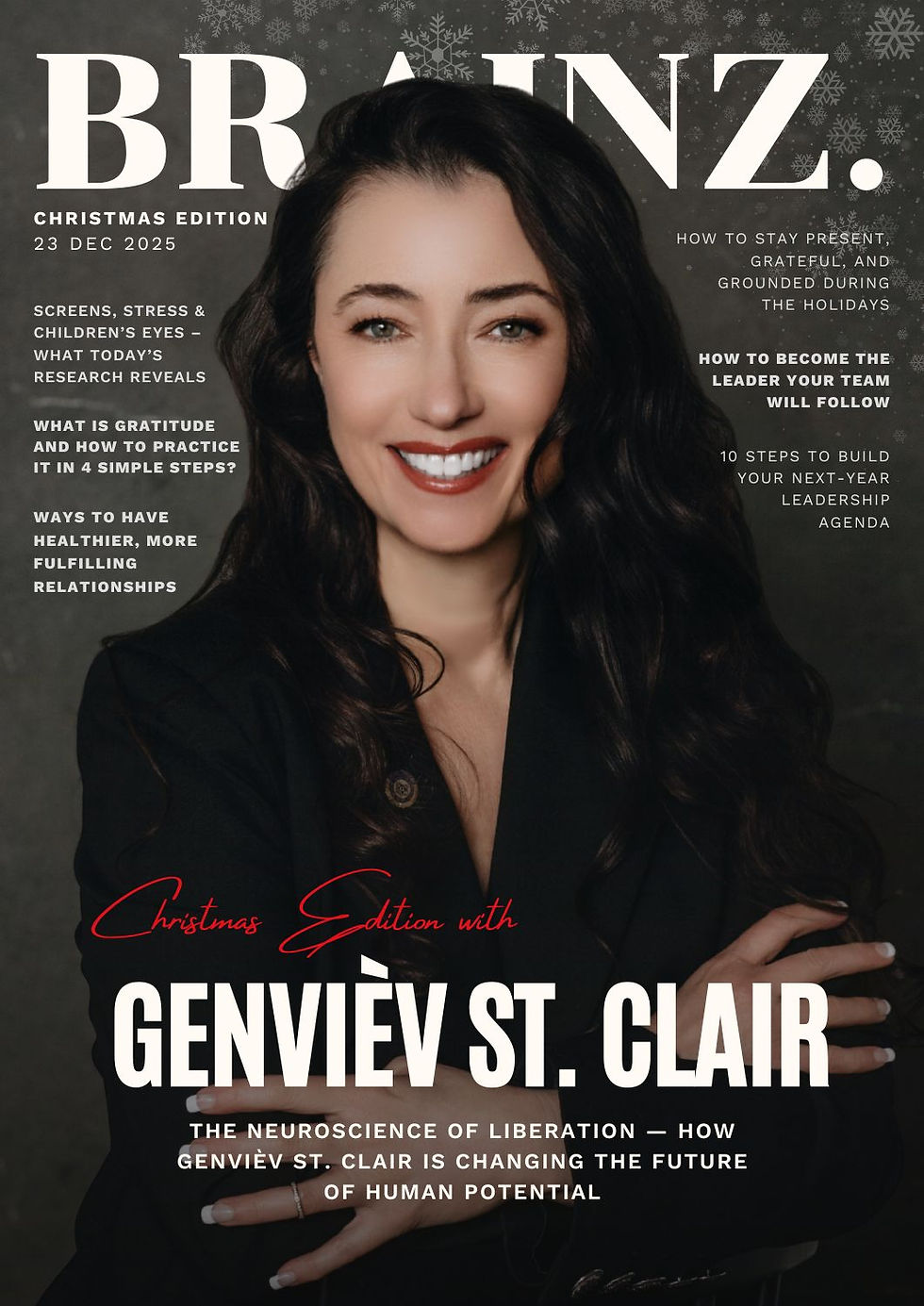Complements Attract ‒ Connecting The Dots Of Codependency
- Brainz Magazine

- Jul 18, 2022
- 6 min read
Updated: Feb 9, 2024
Written by: Travis Thompson, LMFT, Executive Contributor
Executive Contributors at Brainz Magazine are handpicked and invited to contribute because of their knowledge and valuable insight within their area of expertise.

If there is one buzzword that permeates relationship discussion, research, and arguments between frustrated partners that portrays unhealthy behavior, it’s codependency. Whether it is being utilized as a descriptor for interpersonal interaction or a bludgeon to shut down an argument, calling someone codependent carries significant weight within a person’s understanding of their own identity. For a term that is so polarizing, there seems to be many different interpretations of what codependency actually is and how it affects people. Some may find the term codependency being used as a descriptor for any perceived “unhealthy” behavior in others but certainly does not describe themselves. Others may define codependency as needing another person to be happy. While some may find these ideas helpful, it can be difficult to truly understand complex dynamics and be able to find ways to change for the better.

Systems Theory in Practice
Before making any assumptions about an individual and their relationship patterns, it is important to understand where they came from and how they see the world. Systems Theory tells us that no person grows up alone and everyone is influenced by their surroundings and relationships. While we are not bound by our relationships, we are certainly shaped by them. Everyone learns about the world and the way that they interact with others through the way that we interacted with our family of origin. These lessons and continual interactions develop into what is called homeostasis, or the way that things remain the same.
This balance of interaction is not considered healthy or unhealthy but just is. As long as everyone in a family unit tolerates the roles that they are given and is willing to enact them, the system will remain stable. These roles could be as simple as the one who succeeds, the one who is sick, the one who is absent, or the one who always needs help. There are many different roles that could be filled, but it is common for people to continue the roles they are given in a family unit unless a significant life event happens. This is the basis of Systems Theory and how families make sense within the context that they reside.
Bicycles and Balance
So, how do codependent relationships come to be? To explain what healthy and unhealthy relationships look like, it is helpful to think of a bicycle remaining upright and each tire is a person in a relationship. For the bicycle to remain upright, there are only two ways that it can happen. First, the bicycle would have to be in motion. Imagine this as a couple moving through their issues and continue moving toward each other in a healthy dynamic of mutual support. This would represent a couple that is willing to hear one another, seek support and resolution with one another, and are not looking outside of the relationship for resolution of issues between the two of them. The other way a bike could stay upright would be if a kickstand were to be utilized. In this dynamic, neither member of the couple moves forward in mutual interaction, but a third party is used to focus energy without truly addressing interpersonal concerns.
This third party, or kickstand, could be many things but is universally identifiable as a factor of intensity in the relationship. In its purest sense, intensity is a heightened feeling of experience and connection that binds a couple together, leading to a lack of connection when this high level of energy is absent. Other examples of intensity could be parents using a child to not deal with their own issues by involving them heavily in sports, academics, or even pageantry designed for 3-year-olds. In more severe cases, this could also be drugs or alcohol that keep a couple together by existing to argue about other things rather than addressing the true relationship issues. The third party holds the anxiety of the couple, often increasing the intensity of the events or the stress on another person. If this third party is a child, it is likely that this child will continue this dynamic in other relationships as they have become accustomed to fulfilling this role in their own family, as was discussed in Systems Theory earlier.
Roles in Tandem
Typically, in codependency, there are two roles, the giver, and the taker. On the surface, these can seem either positive or negative. However, this is not the case. Each role has its own needs and ways in which validation comes. Neither one shows precedence over the other, but they often exist in balance with the other, creating a cycle of interaction that becomes stable, but not necessarily healthy over time.
In the codependent dynamic, the giver gains a relationship from being the supporter between the two. Their instinct is to help the other person by giving of themselves, typically from their emotional energy. This can manifest in the emotional or financial investment in the other person, with the hope that genuine change can come, and their support could make a difference for their partner. Givers also gain validation from being recognized as helpers that take in those who need help. Their negative outcomes stem from the connections they make to those who do not give fully back to them and the avoidance of their own traumas and interpersonal concerns. They may assume that they can avoid their own problems by focusing on others, or maybe they attempt to resolve the past by “fixing” the present.
The other half of this dynamic is the taker. Again, the term taker implies a negative interpretation of someone’s needs and responses to relationships. However, this side of the relationship sees validation in gaining support for things they may or may not feel like they can achieve. They often can see great plans for themselves as an individual and as a couple but may struggle to gain or keep the stamina to achieve everything at hand. Takers gain validation through their accomplishments both interpersonally and possibly professionally. Their negative outcomes stem from their lack of personal directive, as well as using a supporter to not have to face their own inadequacies emotionally or finding themselves needing others to complete what they need to accomplish for their own benefit or to the benefit of those around them. Takers’ own trauma can lead them to feel the need to be self-sufficient and not connect with others, to not burden them, inadvertently leading to an emotional distance in the relationship.
Riding Happily Again
So, what do we make of this? Are we all doomed to move between codependent relationships until we find ourselves perpetually single or die alone? For one, this information is not something that should be used as a weapon. The first two letters in codependent imply that it involves two people, not just one. If someone were to call their partner codependent, by definition, they would be codependent as well. Instead, consider codependent relationships to resolve old hurts. Some people “need to be needed” by others, thus fulfilling the role of a giver, hoping to change their beliefs about themselves. Some people find themselves so distant from their emotional experiences and needs due to past experiences that they will take any emotional experience given to feel stable and present, thus fulfilling the role of a taker.
In all things concerning mental health, there is a balance of compassion and accountability. Symptoms and trauma should be understood in context, but they do not provide an excuse to continue unhealthy behavior. If you find yourself on a bicycle that has not moved in a long time or in one of the two roles listed previously, a few things are important. First, realize that your behaviors make sense in context and that change is possible with positive support through a therapist or other emotionally healthy individuals. Second, unraveling a codependent relationship makes it necessary to experience a healthy relationship to see what change could look like and see hope for the future. You must work towards and seek out healthy relationships. Third, you have “the burden of knowing” after reading this. If you identify with this topic and see yourself in it, you cannot go back and pretend that none of your actions played a part in a codependent cycle. So, at this point, the information that you read can both convict your conscious and compel you to see a change in yourself and others. Please do so with compassion and kindness and advocate for open communication between yourself and your partner. The antidote for codependency is vulnerability, safety, and resolution between members of the couple.

Travis Thompson, LMFT, Executive Contributor Brainz Magazine
Travis Thompson, is a researcher, teacher, and therapist focused on healing the lives of those in addiction. With a drive to see effective, long-term change in his community, he has dedicated himself, his practice, and his doctoral work on both research, education, and implementation of recovery. He strives to further the mental health field towards a holistic and advanced understanding of what addiction truly is, where it comes from, and how we all can help.
Resources:
Codependent No More: How to Stop Controlling Others and Start Caring for Yourself- a book by Melody Beattie
It Didn’t Start with You: How Inherited Family Trauma Shapes Who We Are and How to End the Cycle- a book by Mark Wolynn










.jpg)